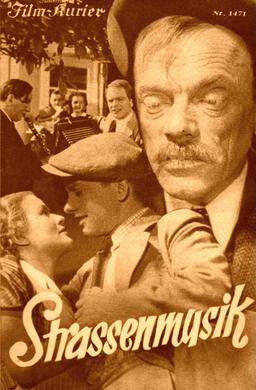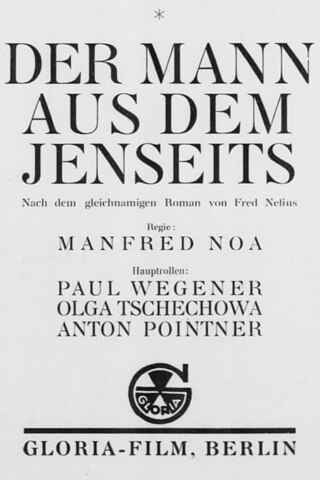Related Research Articles

Asta Sofie Amalie Nielsen was a Danish silent film actress who was one of the most popular leading ladies of the 1910s and one of the first international movie stars. Seventy of Nielsen's 74 films were made in Germany where she was known simply as Die Asta.
Roswolsky's Mistress is a 1921 German silent drama film directed by Felix Basch and starring Asta Nielsen, Paul Wegener, and Wilhelm Diegelmann. It was based on a novel by George Froeschel. The film was shot at the Tempelhof Studios in Berlin, with sets designed by art directors Robert Neppach and Jack Winter. According to one estimate, the star Asta Nielsen wore thirty six different costumes during the course of the film.

Grit Haid was an Austrian stage and film actress. She was the younger sister of the actress Liane Haid. She died in a plane crash in 1938.

The Three Mannequins is a 1926 German silent film directed by Jaap Speyer and starring Hans Albers, Anton Pointner, and Paul Graetz. It was shot at the Terra Studios in Berlin. The film's sets were designed by the art director Hans Jacoby. It premiered at Berlin's Marmorhaus.

Street Music is a 1936 German comedy film directed by Hans Deppe and starring Jessie Vihrog, Fritz Genschow and Ernst Legal. The film's sets were designed by the art director Max Seefelder. It was made by Bavaria Film at the Emelka Studios in Munich.
Athletes is a 1925 German silent film directed by Frederic Zelnik and starring Asta Nielsen, Gregori Chmara and Arnold Korff.

Miss Julie is a 1922 German silent drama film directed by Felix Basch and starring Asta Nielsen, William Dieterle, and Lina Lossen. It was based loosely on August Strindberg's 1888 play Miss Julie.

Malice is a 1926 German silent film directed by Manfred Noa and starring Paul Wegener, Olga Chekhova and Anton Pointner. The film's art direction was by Artur Günther.
The White Roses is a 1916 German silent film directed by Urban Gad and starring Asta Nielsen, Ernst Hofmann, Max Landa and Fred Immler.
Zapata's Gang is a 1914 German comedic silent film directed by Urban Gad and starring Asta Nielsen and Fred Immler. It depicts the difficulties a crime film's actors face after being mistaken for actual robbers.
Poor Jenny is a 1912 German silent film directed by Urban Gad and starring Gad's wife Asta Nielsen, Leo Peukert and Emil Albes.
The Film Primadonna is a 1913 German silent film directed by Urban Gad and starring Asta Nielsen and Paul Otto.
Little Angel is a 1914 German silent comedy film directed by Urban Gad and starring Asta Nielsen, Max Landa and Fred Immler.
The Dance of Death is a 1912 German silent film directed by Urban Gad and starring Gad's wife Asta Nielsen. It was one of the first films made at the new Babelsberg Studio in Berlin.
Frontstairs and Backstairs is a 1915 German silent film directed by Urban Gad and starring Asta Nielsen and Paul Otto. It is based on the 1889 play Honour by Hermann Sudermann.
The Queen of the Stock Exchange is a 1918 German silent film directed by Edmund Edel and starring Asta Nielsen and Aruth Wartan.
Helmsman Holk is a 1920 German silent drama film directed by Rochus Gliese and Ludwig Wolff and starring Asta Nielsen,Theodor Loos and Paul Wegener.

Little Veronica is a 1929 Austrian-German silent film directed by Robert Land and starring Käthe von Nagy, Maly Delschaft and Mizzi Zwerenz.
Colonel Chabert is a 1920 German silent historical film directed by and starring Eugen Burg. It is an adaptation of Honoré de Balzac's 1832 novel Colonel Chabert.

Love, Dance and a Thousand Songs is a 1955 West German musical comedy film directed by Paul Martin and starring Caterina Valente, Peter Alexander and Rudolf Platte. It is a revue film, showcasing a number of different performers. It was filmed at the Spandau Studios in West Berlin and on location around Mittenwald in Bavaria. The film's sets were designed by the art directors Hans Jürgen Kiebach and Gabriel Pellon.
References
- ↑ Kapczynski & Richardson p.47